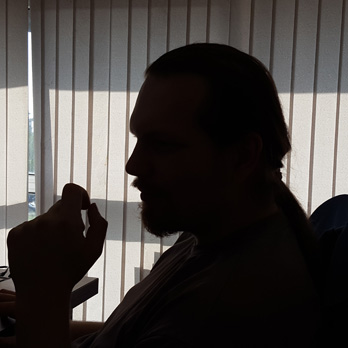We connect any devices with network interfaces to Internet and each other to help them work
MOAR Stack - routing protocol stack that allows mobile devices to self-organize into ad-hoc network.Existing today mobile networks use the base stations and the topology of a star. This proven solution cannot stay effective in the near future. The number of mobile devices is growing rapidly; in addition to consumer electronics this number includes various sensors, urban infrastructure, public transport, etc. The problem cannot be solved by increasing the number of base stations, because that would require a significant investment and licensing of new frequency bands.
End-to-end encryption provide safety standards to transfer data via any number of nodes.
Algorithms like neural networks with deep learning for selecting the most optimal routes.
Network can work without base stations, nodes choose their role according to situation.
MOAR Stack can be easily adapted to different computing power devices and interfaces.

In an emergency situation, the stable exchange of information is critically important. However, warning SMS about natural disasters often cannot be delivered on time. After disasters classic mobile networks are overloaded or does not function completely. But using MOAR Stack mobile phones can be easily networked via wireless interfaces such as Wi-Fi or Bluetooth. Searching of victims and missing persons with this technology can be significantly simplified for emergency services.

Cloud services are everywhere! Most of the new products entering the market is closely chained to servers and requires a permanent internet connection for proper operation. One server to manages all: one switch to shut down all - it is a dead-end branch of evolution.
We represent the Internet of things otherwise. Today even cheap microcontrollers have sufficient processing power to self-analize data and make their own decisions. MOAR Stack is a cross-platform solution; it may allow to combine a lot of smart home appliance using different radio interfaces (sensors, hubs, alarm detectors, indicators, servo controllers etc.) in stand-alone piconet.
Team members
Days working
Lines of code
Packets delivered
We started from implementation of the simplest S1 version of our stack in hardware solution based on LoRa radio and NXP lpc13xx chip family.

LoRa module prototype

3D-printed case

LoRa module prototype

LoRa module prototype

PCB without components

2 LoRa modules connected to prototype boards
"We reinvent the Internet, because we know how"
First MOAR stack implementation for linux.
We really need your feedback!
Our team has extensive experience in various fields - from the design of electrical circuits to programming on HPC clusters

The winner of the RuCTF 2012 Yekaterinburg, Russian Federation. Six years' team leading experience (CTF, hardware and software development). Participation and speech at the conference on information security in Russia (PHD, RuCTF), Switzerland (Insomnihack) and USA (Defcon).

Six years' experience in software development (from the desktop applications to the microcontroller firmware). And three years' experience with HPC clusters.
The winner of the Regional Final Imagine Cup 2009. Participation in Positive Hack Days 2011 conference. Since 2009 actively participated in information security competitions and CTF.
Kaliningrad, Russia